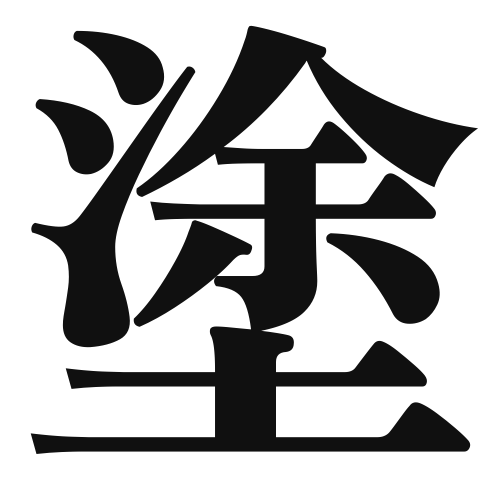1. Overview of Meaning
The kanji “塗” (pronounced “nu” or “to”) means “to paint” or “to coat.” It refers to the action of applying a layer of substance, such as paint or lacquer, onto a surface.
2. Formation and Radical
Formation of the Kanji: The kanji “塗” is a compound character (会意文字) that combines the elements of “土” (earth) and “者” (to do). This suggests the idea of applying something (like paint) onto a surface made of earth or clay.
Radical: The radical of “塗” is “土” (earth), which is often associated with soil or ground-related concepts.
3. Examples of Usage
Common Words and Phrases:
- 塗料 (とりょう, toryou) – paint or coating material
- 塗装 (とそう, tosou) – painting or coating
Example Sentences in Daily Conversation:
- この壁を塗る必要があります。 (このかべをぬるひつようがあります。) – We need to paint this wall.
- 彼は車を塗装しています。 (かれはくるまをとそうしています。) – He is painting the car.
4. Synonyms and Antonyms
Similar Kanji:
- 描 (びょう, byou) – to draw or depict, which focuses more on the act of drawing rather than coating.
Antonyms:
- 剥 (はく, haku) – to peel or strip, which means to remove a layer rather than apply one.
5. Cultural and Historical Background
Relation to Japanese Culture: The act of painting and coating is significant in Japanese culture, especially in traditional arts such as calligraphy and pottery. The use of lacquerware (漆器, しっき, shikki) is a notable example where “塗” plays a crucial role.
Proverbs and Idioms: One common saying is “塗り替え” (ぬりかえ, nurikae), which means to repaint or to change something fundamentally, often used in the context of changing one’s mindset or approach.
